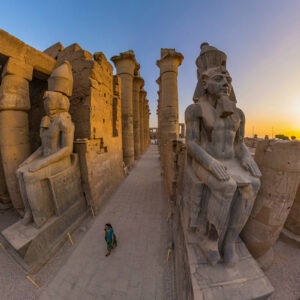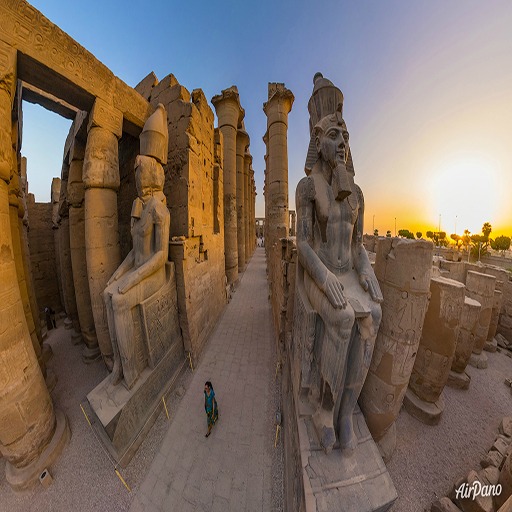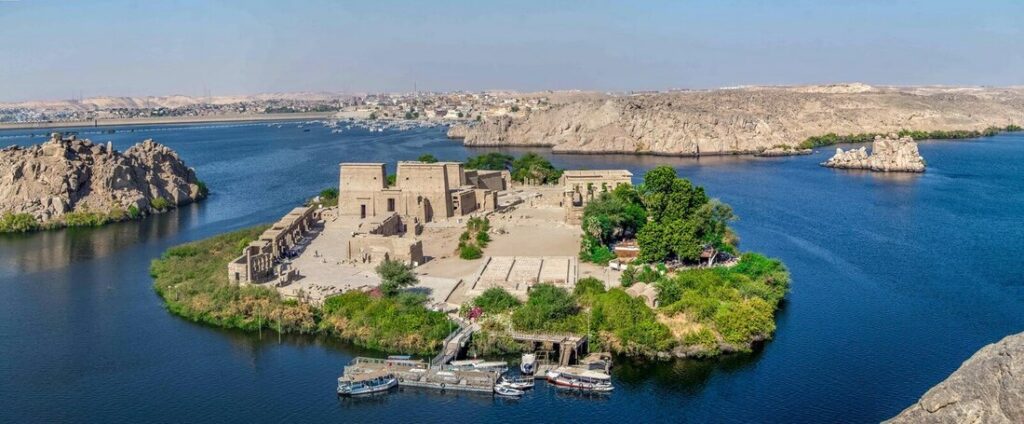It is one of the most magnificent temples in ancient Egyptian history and one of the most complex as well. It is located on the eastern side of the Nile in the city of Luxor, which was known in ancient times as Thebes (the capital of the modern Pharaonic state). Construction engineer… It was built by the engineer Amenhotep bin Jabu by order of Pharaoh Amenhotep III, one of the kings of the Eighteenth Dynasty.
Reasons for constructing Luxor Temple
Luxor Temple was built to be a seat for the worship of the Theban trinity of gods (named after the city of Thebes: Amun Ra, his wife Mut, and their son Khonsu). By the way; This Khonsu is the god of the moon among the ancient Egyptians, and he is the same character whose character was embodied in the famous series “Moon Knight.” According to ancient Egyptian traditions, the Pharaoh was required to have pure blood in order to achieve his legitimacy, and this was achieved in two cases: The first: that he be the son of a Pharaoh and a princess of pure blood lineage.
The funny thing is that this issue of blood purity makes you feel like you are watching a movie about vampires in the time of the Wild West.
If this condition is not met, he is required to be a husband to the eldest daughter of the former pharaoh. When one of these two conditions was not met in Amenhotep III due to the fact that his wife was not a descendant of kings, and his mother was not Egyptian at all, he built this temple to prove his lineage to the god Amun himself, and he engraved the incident of the sacred birth of the son of the god (as he claimed) on the walls of the famous birth room in the temple.
Likewise, the Luxor Temple was built as an approach and to please the priests of Amun so that they would accept his legitimacy to assume the throne.
The structural engineering of the temple
The Egyptian engineer’s planning is clearly visible in the temple, as the ancient engineers created the Luxor Temple on the eastern bank of the Nile in order for it to be in one line with the Karnak Temple and with the Sphinx or Rams Road that connected the two temples.
The relationship between Luxor Temple and Karnak Temple
The Luxor Temple was a major place for one of the most important religious celebrations in ancient Egypt. The statues of the Theban Trinity (Amun – Mut – Khonsu) were transported in a great, majestic ceremony and procession from the Karnak Temple to the Luxor Temple to visit the deity residing there (Amun-Mut-Khonsu), which is the so-called celebration. Far from Obit.
The construction and changes that occurred in the Luxor Temple throughout history
First: King Amenhotep III built the heart of the temple around the year 1400 BC. Second: King Ramesses II added the edifice, the two obelisks, and the open courtyard, and engraved his victories, especially the Battle of Kadesh. Third: King Tutankhamun (the Golden Pharaoh) completed the inscriptions on the walls of the temple. Fourth: During the Christian era in Egypt, part of the temple was converted into a church. Fifth: During the Islamic era, the Sufi Sheikh Youssef Abu Al-Hajjaj Al-Aqsari Mosque was built on part of it. The Luxor Temple was a symbol of cultural intersection, and a unique example of the multi-class and multi-religious history of Egypt.
Uses of Luxor Temple in the era of kings and priests
First: Prayers and religious rituals to honor the Theban Trinity, communicate with the gods, and offer sacrifices and prayers. Second: Royal occasions and religious celebrations, such as the coronation of kings, feasts of the gods, and the Opet Festival. Third: Architectural planning and artistic expression, This is represented in the symbols and inscriptions on the walls of the temple, which tell historical events and stories of gods and kings. Fourth: Culture and education, The priests taught the kings and the people about their religion, and the inscriptions and symbols carried religious information and educational meanings.
Description of Luxor Temple
Luxor Temple includes:
First: Sphinx Road.
Second: Obelisks
Third: The monument of Ramesses II.
Fourth: The western (right) wing.
Fifth: The eastern (left) wing.
Sixth: The first courtyard.
Seventh: The palaces of Tuthmosis III.
Eighth: The courtyard of the fourteen cylinders.
Features around Luxor Temple
First: It is worth noting that some scholars state that it is possible that there was a temple or the remains of an ancient temple or a sacred shrine dating back to the era of the Middle Kingdom in the same place that was erected. It houses Amenhotep III, Luxor Temple. Second: Queen Hatshepsut and King Thutmose III built three shrines allocated to the Theban Triad. They were then destroyed over time and rebuilt during the reign of Ramesses II, and his name was recorded on them. Third: King Ramses II built two obelisks to be part of his edifice in Luxor Temple. It is worth noting that there is only one remaining, as the second was moved to the Place de la Concorde in Paris in 1836 AD, and the remaining obelisk had its base decorated with a group of monkeys that praised the sun god.
Fourth: Some of the drawings in Luxor Temple have diminished in appearance or have disappeared to a large extent, and efforts are still underway to return them to their former luster and glory.
Egypt Tours plus Luxor temple
-
From $1440 🎗 10% OFFAswan, Cairo, Egypt, Luxor

 Sale! Add to cart
7 Days Deluxe Nile cruise + Domestic Flights
Sale! Add to cart
7 Days Deluxe Nile cruise + Domestic Flights7 Days Tour To Egypt with Cairo, Aswan, Luxor, and Nile Cruise
Rated 5.00 out of 5Nile Cruise$2,000.00$1,600.007-Days Tour To Egypt with Cairo, Aswan, Luxor, and Nile Cruise Egypt Cruis Era provides you with a 7 days tour to Egypt that covers the essentials of Cairo, Aswan, Luxo -
From $1530 🎗 10% OFFAbu Simbel, Aswan, Cairo, Egypt, Luxor

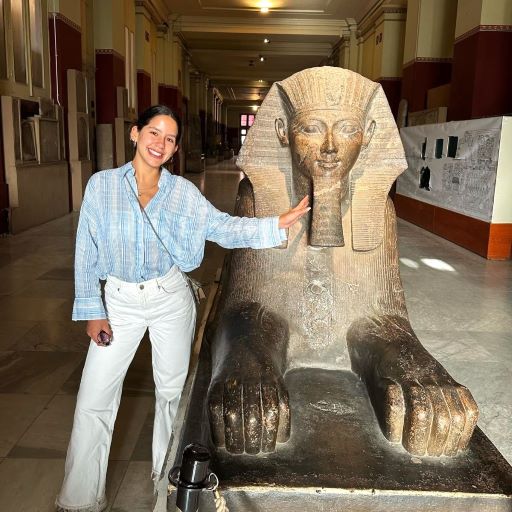 Sale! Add to cart
8 Days Deluxe Nile cruise + Domestic Flights
Sale! Add to cart
8 Days Deluxe Nile cruise + Domestic Flights8 Days Egypt Tour Package with Cairo and Nile Cruise
Rated 5.00 out of 5Nile Cruise$2,000.00$1,700.008 Days Egypt Tour Package with Cairo and Nile Cruise Our 8 Days Egypt Tour Package with Cairo and Nile Cruise is your opportunity to Enjoy the best Egypt tours Staying in -
8 Day Egypt Luxury Tours and Luxury Nile Cruise Package
Rated 5.00 out of 5Egypt Tour Packages$3,500.00$2,800.00Why you’ll love this trip: Experience the mysteries and treasures of Egypt in a Luxury way. Embark on a leisurely paced 4-night Luxury cruise on the Nile, the -
Why you’ll love this trip: Very concentrated tour. only 5 hours and you will discover most of the attractions of the West Bank Very comfortable – Pickup a
-
From $768 🎗 0% OFFAswan, Cairo, Luxor

 Sale! Add to cart
4 Days Deluxe Nile cruise + Domestic FlightsWhy you’ll love this trip: Sail along River Nile over 4 days from Cairo Explore and relax on 4 days’ trip to cover the sights in Luxor, Aswan, Edfu and Ko
Sale! Add to cart
4 Days Deluxe Nile cruise + Domestic FlightsWhy you’ll love this trip: Sail along River Nile over 4 days from Cairo Explore and relax on 4 days’ trip to cover the sights in Luxor, Aswan, Edfu and Ko -
From $690 🎗 0% OFFAlexandria, Cairo, Luxor
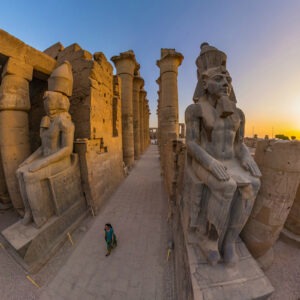
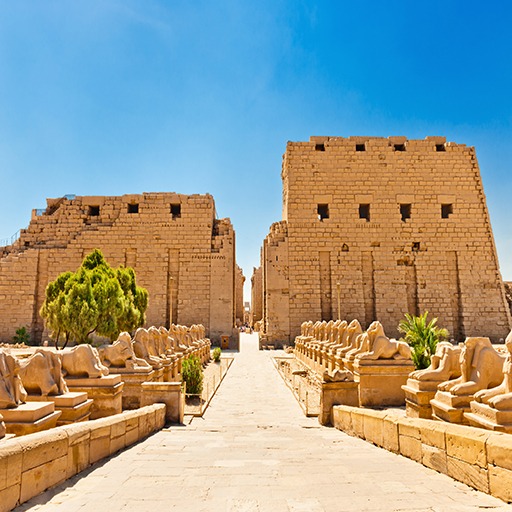 Sale! Add to cart
6 Days Deluxe Nile cruise + Domestic Flights
Sale! Add to cart
6 Days Deluxe Nile cruise + Domestic Flights6 Days Cairo, Alexandria & Luxor Honeymoon Tour
Rated 5.00 out of 5Egypt Tour Packages$3,500.00$2,800.00What to bring with you? A trip to Egypt takes you to a mystical destination where you can di



